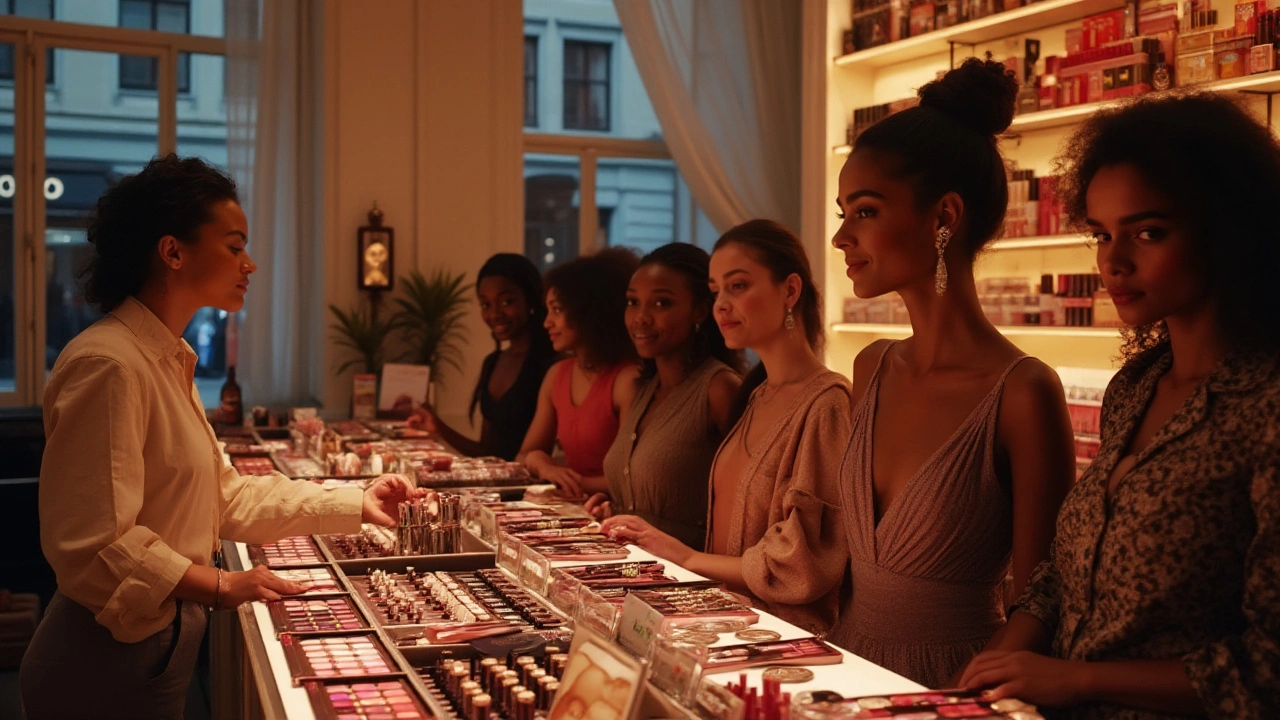Makeup Brands: Trends, Rankings & Buying Guides
When exploring makeup brands, companies that create and sell cosmetics like foundation, lipstick, and eye shadow. Also known as cosmetic brands, they shape how we look and feel every day.
The broader makeup industry, global market that includes manufacturers, retailers, and trendsetters drives the money flow behind those brands. In 2025, total makeup revenue, sales value generated by all cosmetic products worldwide topped $150 billion, with a few giants capturing most of the pie. Meanwhile, everyday makeup products, items such as foundation, mascara, and blush that consumers buy regularly reflect shifting preferences for clean formulas and inclusive shades. Makeup brands encompass a range of makeup products. The makeup industry drives makeup revenue. Makeup revenue influences brand rankings.
If you’re hunting for the best makeup brands to add to your kit, you’ll see everything from revenue rankings to beginner‑friendly product guides. Below you’ll find articles that break down which brand earns the most money, compare US‑market favorites, and show how to build a solid basics kit.
What makes a makeup brand stand out?
First, look at financial performance. Brands that consistently post double‑digit growth in makeup revenue often invest heavily in R&D, allowing them to launch innovative textures and shades. Second, consider product breadth: a brand that offers a full spectrum—from primer to setting spray—lets you stay within one ecosystem, simplifying shade matching. Third, pay attention to consumer sentiment. Social listening shows that brands championing cruelty‑free formulas and eco‑friendly packaging see higher loyalty scores.
Another angle is geographic reach. Some brands dominate the US market but have limited presence elsewhere, affecting availability and price. Global players adapt formulas to local skin tones, which can widen their appeal and boost worldwide makeup revenue. Understanding these dynamics helps you predict which brands will stay relevant and which might fade.
When you compare brands, keep an eye on price elasticity. High‑end lines command premium pricing, yet many consumers switch to mid‑range alternatives if the perceived value drops. A brand that balances quality with affordable pricing often captures a larger share of the makeup market, translating into stronger revenue streams.
Ingredient transparency is also a hot topic. Brands that disclose concentrations of actives like hyaluronic acid or vitamin C earn trust, especially among the younger audience that values clean beauty. This trust can translate into repeat purchases, feeding directly into the overall makeup revenue numbers.
Finally, marketing strategy matters. Brands that leverage influencer collaborations and user‑generated content see spikes in both sales and social buzz. Those campaigns often drive short‑term revenue spikes but can also cement long‑term brand equity if the messaging feels authentic.
All these factors—financial health, product range, sustainability, price strategy, ingredient clarity, and marketing savvy—interact to shape the makeup brand landscape. The articles below dive deeper into each of these pieces, giving you the tools to pick brands that match your style, budget, and values.
Ready to explore the detailed rankings, revenue breakdowns, and practical buying tips? Scroll down to see the curated collection of posts that will help you navigate the world of makeup brands with confidence.

Top 10 Must-Have Makeup Brands in 2024
Explore the top makeup brands that have captured the hearts and faces of beauty enthusiasts in 2024. This article delves into the qualities and innovative products offered by each brand, giving you insights into why these names dominate the cosmetics industry. Whether you're a seasoned beauty guru or just beginning to explore the world of makeup, discover which brands are setting the trends and transforming beauty routines around the world. From luxury to accessible brands, find the perfect fit for your beauty needs.
© 2025. All rights reserved.